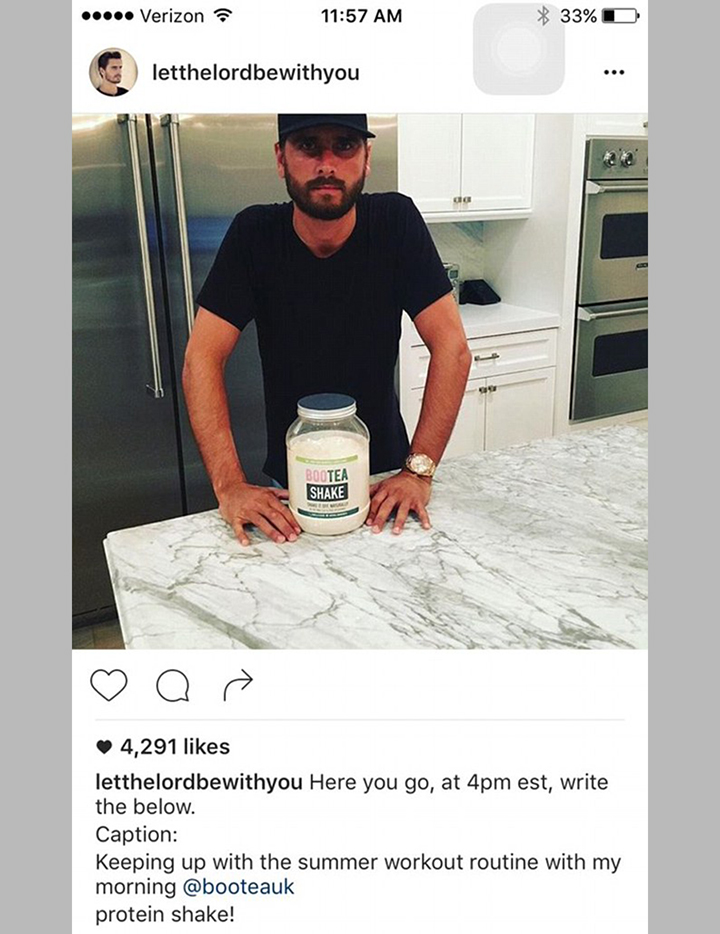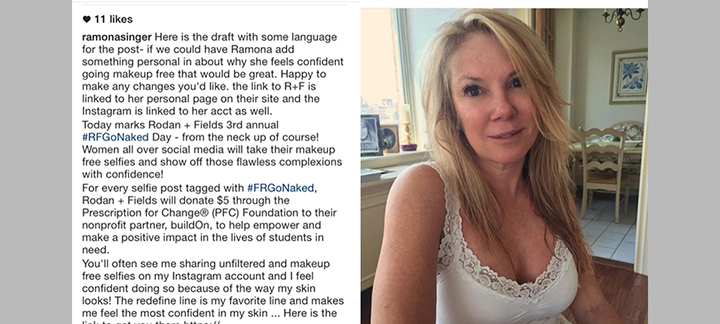- Blog Home
- Social Media Marketing
- Kevin O'connor
- The Ultimate Influencer Marketing Guide: The Do's, Don'ts, Micro Influencers, And Top Platforms For Business
The Ultimate Influencer Marketing Guide: The Do's, Don'ts, Micro-Influencers, and Top Platforms for Business

When Gary Vaynerchuk talks, people listen - in fact, at least half the planet with access to the internet listens. In more than one recent keynote, Gary Vaynerchuk has called influencer marketing one of the two most important forms of persuasion in all of digital marketing, Facebook ads being the other.
"I truly believe that it's one of the most effective ways of advertising a brand right now as well ... they're able to genuinely and effectively present a product or service in a way that affects the audience consuming their content."
Great, Gary Vee loves it. But what is it? In this post we will define influencer marketing, talk about how it has evolved and where it's headed, what brands are using it the right way, some infamous influencer marketing fails, using micro-influencers, and I'll recommend the top influencer marketing platforms out there for your business.
I know, I know...that's a lot of ground to cover. So let's get to it!
What Is Influencer Marketing?
If you're confused about influencer marketing, don't let the marketing lingo get in the way. Even if you don't think you know exactly what influencer marketing is, you've probably seen it in action. Ever seen a social media or blog post that was sponsored? Congratulations! You're already quite knowledgeable about influencer marketing. Essentially, it's paying someone to act as a spokesperson for your product to their network of followers.
Although influencer marketing is most closely associated with the glossy loveliness of social media network Instagram, you can find influencers hard at work influencing on Twitter, YouTube, Facebook, Tumblr, Snapchat, Pinterest, and LinkedIn, plus the term also encompasses bloggers. In many ways, influencer marketing is the logical conclusion of blogging. For years, influential bloggers have been getting paid to introduce products to their readers. Now, as audiences consume more and more video and visual content on social networks, influencer marketing on social networks is becoming more visual, too.
How Is Influencer Marketing Evolving?
In charting the rise of influencer marketing, it's worth looking at the industry in relation to the general decline of traditional interruption advertising. The meteoric rise in ad blockers is but one barometer of the public's distaste for being advertised to. In a recent poll by Rakuten Marketing, 83% viewed online advertising as a "disruptive" experience. For marketers, that means finding new, more effective ways to reach consumers.
Who's Using Influencer Marketing Effectively?
Do influencer campaigns sometimes feel like a bunch of out of work actors who can't hit their lines? Yes, and that's part of the charm. There's an intimacy to not getting everything right. You'll actually find typos and just plain awkward use of the English language. While we're not endorsing that... being informal does get results. Think about it, when was the last time you proofread an email to a friend? (If you answered yes, you're part of a weird 1% who doesn't need to keep reading!) If you're still with us, that means you answered correctly: Never. When people feel free to express themselves, they don't take time to overly edit and they don't hit spell check. What's a little typoo between friends?
Then there's the high end of influencer marketing, like M&M's Delicious "Flavor Vote" Campaign. M&M's came up with the idea of having audiences vote on their newest flavor in the 2016 election year. They brought in the star of HBO series Veep Tony Hale to be the "Official Campaign Manager." M&M's also picked nine social media influencers to help drum up voting for each of the three flavors in contention: Honey Nut, Chili Nut, and Coffee Nut.
Plus, another 20+ social media stars were brought in to create visual content as "Campaign Staffers." This group went by the hashtag #MMSFlavorVote. The influencers were chosen for their ability to geo-target certain areas with their social posts, and together the group blanketed the nation with M&M's voting awareness. The results? M&M's racked up 269 million combined public relations hits and influencer impressions. (Also, Coffee Nut flavor won the election.)
There are a lot of things to love about this social media influencer campaign (besides the mind-blowing results). First, creative content strategy. They went all-in on the voting theme and set up different levels/skill sets of influencers to drive the campaign. They smartly chose influencers across different geographical regions, who between them could cover the nation. They also came up with unique hashtags to track results.
How Can Small Businesses Start Using Influencer Marketing?
Have a scrappy startup to get off the ground? You don't need a major advertiser-sized budget to get results. One of the best things about influencer marketing is that there's nearly no barrier to entry. Almost anyone can afford to pay a less well-known social media figure, which brings us to the smoldering hot topic every small business should know: micro-influencers.
Consider Tapping Into Micro-Influencers
Micro-influencers with 30,000 or fewer followers have been shown to be more beneficial than larger-reach influencers and celebs, says social media marketing firm HelloSociety. According to their statistics, so-called micro-influencers deliver in a big way:
- Micro-influencers cost 6.7X less per engagement
- Their engagement rate was 60% higher
- They got more than 22% more weekly conversations
While no one can prove exactly why smaller micro-influencers have often generated dramatically better results, there are a couple of fascinating theories worth delving into. For one thing, people with smaller audiences tend to be more personally invested. They're not making krazy Kardashian money. They're in it for the love of the game, and that authenticity resonates. Another is that a micro-influencer can have more direct interaction with a smaller community (if you don't have 3 ka-billion followers, there's a better chance you're personally interacting with them).
The great thing about micro-influencers is that there are always up-and-comers who haven't made it into the big leagues - yet. So, do some research on the social networks you're interested in working on, then get to DMing. This could be the affordable way to meaningfully engage consumers your brand has been looking for.
Take These Influencer Marketing Tips to the Bank
Be Transparent
It's the internet, so of course someone is watching... um, like the government. In 2017, the FTC (Federal Trade Commission) handed down some "friendly reminders" to influencers about disclosing endorsement relationships. It may have come as a harsh reminder to those who were being less than forthcoming. Overall, the rules legitimize influencer marketing and help prevent it from becoming a Wild West of pay-for-play. According to the FTC:
"Influencers should clearly and conspicuously disclose their relationships to brands when promoting or endorsing products through social media."
Not sure if you're crossing the line? Get the full scoop in the FTC's Endorsement Guides.
Don't Send In the Wrong Messenger
Chriselle Lim is an example of a good blogger + wrong message = getting roasted on Instagram. Chriselle is known for slick lifestyle photos that capture her love of expensive fashion and travel. To hear her wax poetic in an Instagram post about how much she loves the environment landed with a gigantic thud. Definitely not the negative reaction Volvo planned for when they hired her to promote their eco-friendly car wash. (Hint: Even on Instagram people can see through superficial self-promotion.) Don't be tempted to underestimate the intelligence of your audience, even when you really, really want to.
Celebs Aren't Worth Blowing Your Whole Budget On
Think that Selena Gomez mention on Instagram is worth blowing your whole year's advertising budget? Think again. Yes, Selena is 2017's reigning Queen of Instagram with more than 130 million followers. That's not to say a celebrity endorsement isn't effective, just don't blow your budget on celebrities when there are so many other (better) influencer options.
Influencer Marketing Don'ts
As a general rule, don't hire "influencers" too dimwitted to cut and paste content (that shows someone else wrote it for them). Looking at you, Scott Disick.

Also lookin' at you Real Housewife Ramona Singer. Did you not read the text that said: "Here is the draft with some language for the post"... before you posted it? Really?! Maybe instead of going without makeup in the post, she should have gone with reading it.

How Does Influencer Marketing Work with Content Marketing?
Great question. It's tempting to think you can just ask for a mention from your favorite new best friend influencer. But once you find the messenger, what are they going to say? The key to success is remembering that your message has to be crafted, as with all great content marketing. Influencer Marketing Hub describes the interplay of content marketing and influencer marketing this way.
"The two types of marketing work hand-in-hand, and often brands use influencer marketing to promote content they created as part of their content marketing strategy."
Recommended Influencer Marketing Platforms
As you can imagine by now, finding and managing a network of influencers is half the battle in influencer marketing. The right automated platforms and services can give you the tools you need to win big. Here are a few of the top influencer marketing platforms we can recommend.
Upfluence
Upfluence offers a monthly subscription to access their massive database, plus the ability to manage influencers from a central dashboard then measure results of your campaigns on Facebook, YouTube, Twitter, Instagram, Pinterest, and blogs. Customers range from small and mid-sized businesses all the way up to PayPal and Microsoft.
Revfluence
Revfluence seems to be a solid choice of platform for brands looking to scale their programs. While they offer a suite of influencer discovery and analytics tools, they emphasize their influencer relationship management system as one of their key differentiators allowing marketers to manage hundreds of influencers at a time.
FameBit
Purchased by Google in October 2016, the FameBit platform works by letting brands post a campaign, then creators pitch them ideas. For brands that means sitting back and letting the offers roll in from influencers on Facebook, Tumblr, Twitter, and YouTube.
Traackr
Traackr has been one of the most established and feature-rich influencer marketing platforms out there since 2008. With Traackr, you get access to a directory of influencers on one of the wider arrays of social networks, including Instagram, Facebook, Twitter, YouTube, Tumblr, Pinterest, and blogs, as well as relationship management and campaign management.
IZEA
IZEA has been part of influencer marketing almost since the beginning in 2006. They offer both software and services for brands and agencies who want to engage in influencer marketing. They're also unique in the range of content they represent, from short media posts by Instagram hotties to long-form content from established journalists.
Julius
Julius bills itself as a "100% Vetted" solution for influencer marketing. Aren't they all? Yes, and no. The big difference with Julius is that each and every influencer is reviewed by a human being, it's not left up to AI. Check out Julius to run campaigns on Instagram, Facebook, Twitter, Snapchat, Pinterest, and YouTube. (Fun fact for sports fans, it was founded by NFL legend Tiki Barber.)
Klear
Klear offers a sophisticated blend of more than 500 million profiles with categories and historical data. Klear works with influencer marketing campaigns across Twitter, Instagram, YouTube, and blogs. Although it's more suited to enterprise-level brands and agencies, they do have a starter plan.
Mustr
Mustr is a powerful CRM for journalists and bloggers and discovery platform all-in-one. By tagging categories, you can find bloggers and journalists in your subject matter. This is a great platform for startups on a budget all the way up to large corporations.
Onalytica
Onalytica uses a combination of algorithms and human oversight to screen its influencer database. You can do more than discover influencers: You can also use the platform to engage, listen, measure, and scale your campaigns. Onalytica works for finding influencers across all the usual suspects like Twitter, Facebook, Instagram, and blogs, plus LinkedIn.
Webfluential
Webfluential sets itself apart from many platforms by focusing on the quality of social media influencers, not by scraping every possible social profile on the planet. They can help you find Instagram, Facebook, Twitter, YouTube, and WordPress influencers who are all vetted and scored. This is a great pick for small businesses, which is powerful enough for big brands like Coca-Cola. Monthly subscription tiers start at only $100/month.
That wraps up our guide. You're locked and loaded with everything you need to launch a successful influencer marketing campaign. Now get out there and influence!



